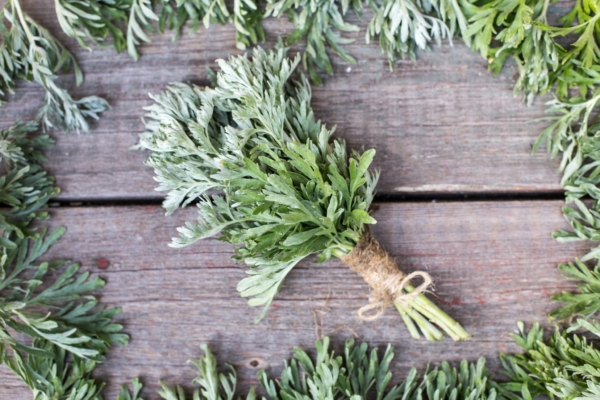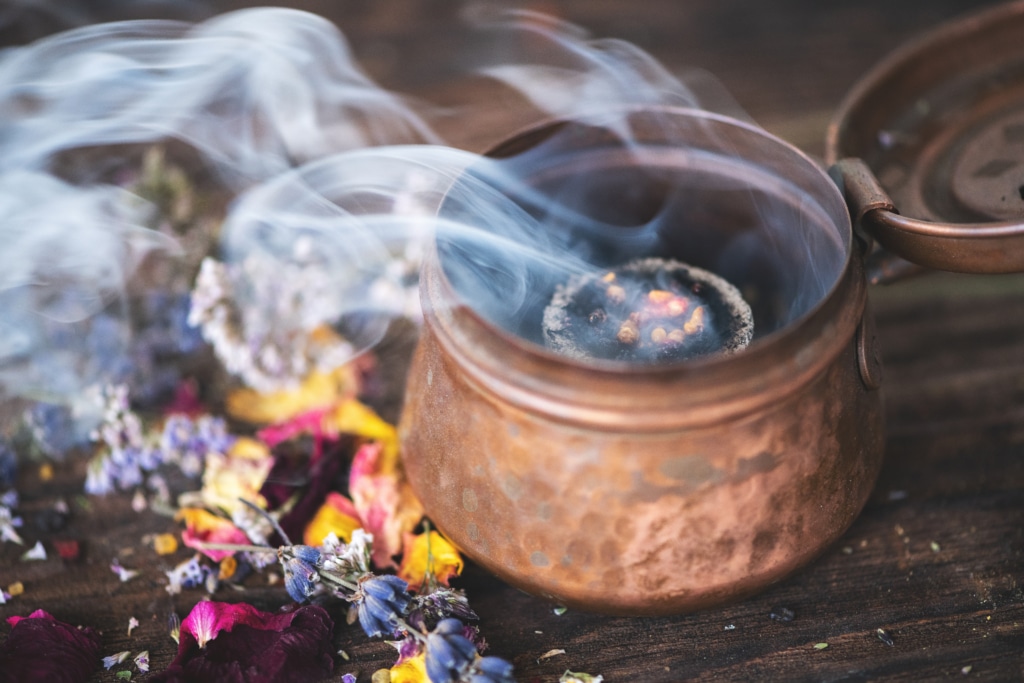
Have you ever woken from a dream so vivid it blurred the line between memory and imagination? Dreams can be fun, strange, symbolic, emotional, or eerily real. They arise most often during REM (rapid eye movement) sleep, a stage when brain activity mirrors wakefulness, and the subconscious mind takes center stage. While science still doesn’t fully understand why we dream, many theories suggest that dreaming plays a vital role in processing emotions, integrating memories, and uncovering creative insights.
In traditions across the world, dreams have long been seen as more than random neural firings. They are portals to the inner self: messages from the subconscious, the soul, and even the natural world. This is the realm of dreamwork, a practice that blends spiritual inquiry, psychological exploration, and intuitive insight. Through dreamwork, we explore the symbols, emotions, and archetypes that arise in dreams and can use them for healing, self-reflection, or guidance.
Just as dreams offer a bridge to the unseen, certain aromatic plants have been used for centuries to support this journey. Quietly attuned to the rhythms of the earth, plants hold an ability to stir something deep within us. Some enhance dream recall or lucid dreaming. Others promote the kind of deep, restful sleep where dreams can flourish in the first place, something many of us need in a chronically overstimulated world.
I’ll never forget one summer night while camping with my herbal school, when I brought along Mugwort, a revered plant in the world of dreamwork. We lit it as incense next to the campfire under the stars and enjoyed its pungent, sage-like aroma. That night, I vividly dreamed of discovering blooming St. John’s Wort in the very woods we were sleeping in – a plant I’d never actually seen before. The next morning, a student mentioned finding it nearby and invited us to harvest. It felt like more than a coincidence. That moment awakened something in me: a deeper trust in the unseen ways plants speak, not just through the body, but through the senses.
In this article, we’ll explore the connection between scent, sleep, and the subconscious. You’ll learn about traditional dream-enhancing botanicals like Mugwort, as well as other aromatic plants that support dreams and deep rest. We’ll also share tips and tricks for incorporating these aromatics into your nighttime routine. Whether you’re seeking more restorative sleep, curious about unlocking inner wisdom, or eager to begin working with your dreams as a spiritual practice, these plant allies are ready to guide you.

The Connection Between Scent and the Subconscious
Scent is one of the most ancient and primal ways we interface with the world, far older than language. When you inhale the aroma of a flower, a forest, or a natural perfume, the molecules bypass rational thought and travel straight to the brain’s limbic system – the seat of memory, emotion, and instinct. It’s here, in this deep and intuitive part of the brain, that scent can evoke powerful reactions before you’re even aware of them.
The limbic system includes the hippocampus, which governs memory, and the amygdala, which regulates emotional response. This is why a single whiff of Lavender can calm a restless mind, or the smell of apple pie spices can bring back memories of your childhood. Scent doesn’t just accompany experience – it imprints it.
This direct line to the limbic system makes aroma a uniquely potent tool for dreamwork. The same pathways that scent uses to trigger memory and emotion are also engaged during dreaming, when the subconscious is more active and receptive. Certain aromatic plants can help us access this liminal space more easily, either by deepening sleep, promoting more vivid dreams, helping us recall dreams, or supporting emotional release and symbolic insight through the dream state.
Ancient cultures across the globe, from the temples of Egypt to the rainforests of Central America, have viewed dreams as a type of sacred guidance – a form of healing and communication with the divine. Incense, infused oils, and aromatic botanicals have been and continue to be commonly used in ceremonies to open the gateways of inner vision and invite meaningful dreams to arise. In this way, aroma is more than scent – it becomes a bridge, a way to gently awaken the subconscious and invite a deeper conversation with the self.
Aromatic Herbs for Dreams

Mugwort (Artemisia vulgaris)
Mugwort is perhaps the most famous aromatic plant associated with vivid and lucid dreaming. Its botanical name, Artemisia, honors the Greek moon goddess Artemis – a fitting connection, as the moon has long been seen as a symbol of the night and the dream world. Just as the moon lights the darkness, Mugwort is said to illuminate the inner realms of consciousness.
Throughout folklore and herbal traditions, Mugwort has been revered for its ability to enhance dream recall, heighten awareness during dreams, and stimulate lucid or even prophetic dreaming. Often called a “visionary herb,” it is known for opening the gates to deeper intuition and psychic perception, guiding the dreamer toward insight and revelation.
Over the centuries, Mugwort has earned a reputation not only for its mystical properties but also for its protective qualities. It is commonly used in rituals for spiritual cleansing, shielding from negative energies, and inviting guidance from the unseen. Herbalist Scott Kloos beautifully describes its power: “The leaves in all forms – tea, tincture, smoke, or even hung up over the bed or placed under the pillow – promote vivid dreams and help uncover, access, and transform areas of psychic unconsciousness.” [1]
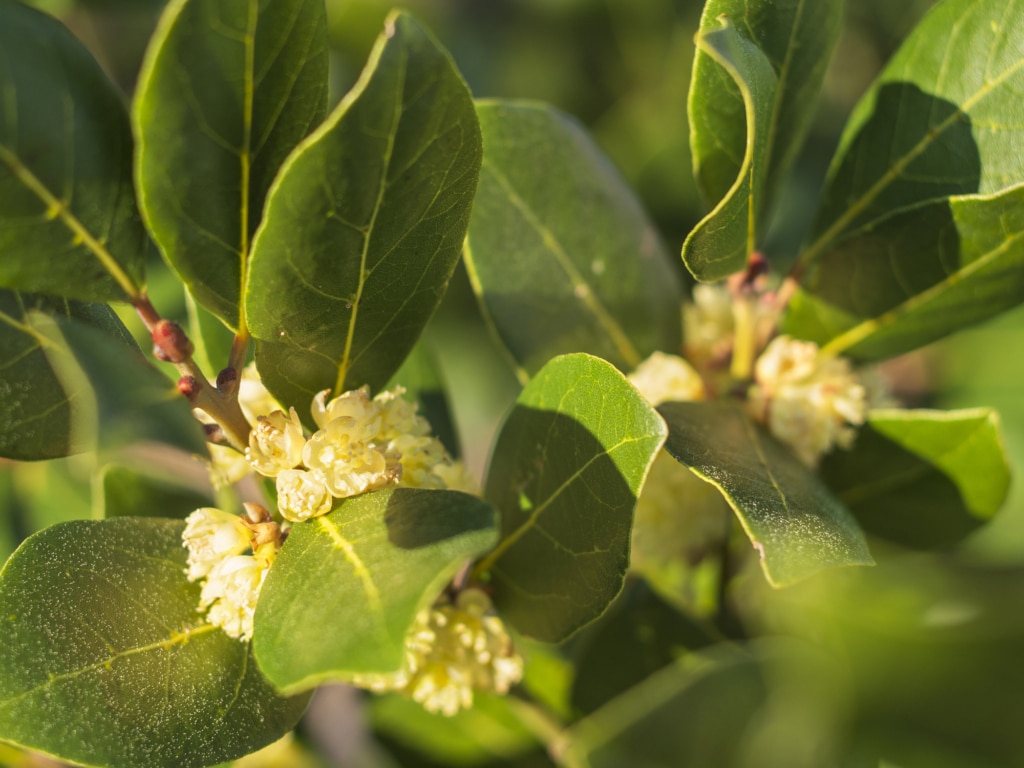
Bay Laurel (Laurus nobilis)
Bay Laurel has long been intertwined with the world of dreams, prophecy, and spiritual vision. In Ancient Greece, this revered tree was central to the sacred rites of divination. The priestesses of the Oracle of Delphi, known as the Pythia, would chew Bay Laurel leaves and inhale their smoke to enter deep, trance-like states. In these altered states of consciousness, they channeled visions believed to come directly from the god Apollo, offering prophetic insights from within a dreamlike realm.
Also known as “Sweet Laurel,” the aroma of Bay is uplifting and clarifying. It has traditionally been used to spark inspiration, elevate self-esteem, and open channels to higher wisdom. In ancient times, Bay leaves were tucked beneath pillows to invite dreams of guidance and divination. They were also burned as incense to purify both body and spirit, used to clear stagnant energies, ward off evil forces, and cleanse spaces during times of illness and unrest.
Bay Laurel is known to intensify the vividness of dreams, sharpen intuitive awareness, and enhance spiritual clarity. It is considered a sacred plant in many traditions, one that strengthens the connection to one’s inner knowing and deepens the experience of ritual and meditation. The essential oil of Bay Laurel is often used in spiritual practice to promote clarity of thought, awaken the senses, and create a state of inner harmony and protection.

Clary Sage (Salvia sclarea)
Clary Sage is revered for its ability to support those who feel lost or disconnected from their true purpose. Its warm, herbaceous scent has a remarkable ability to quiet the mental noise of doubt and worry, especially for those caught in the endless spiral of “what-ifs.” As its fragrance unfolds, it stirs buried memories and reignites forgotten dreams, gently reminding you of your depth and potential.
This majestic plant acts as a catalyst for self-awareness, helping to dissolve any subconscious walls you may have built to protect yourself or keep others at a distance. Through its aroma, Clary Sage invites you to reconnect with your intuition, opening the door to clearer insights and a deeper understanding of your next steps in life. It encourages you to listen to the wisdom within, unlocking stuck energy and sparking inspiration.
The term “Sage” refers not just to a plant, but to a wise one, someone who carries deep understanding and offers guidance with humility and clarity. In this way, Clary Sage acts as both a companion and a mirror, helping you awaken the sage within. It reminds you of your inner knowing, your strength, and the direction that has always lived inside you, waiting for your attention. In dreamwork, Clary Sage can be used to enhance intuitive clarity, release emotional stagnation, and support those seeking a renewed sense of purpose.
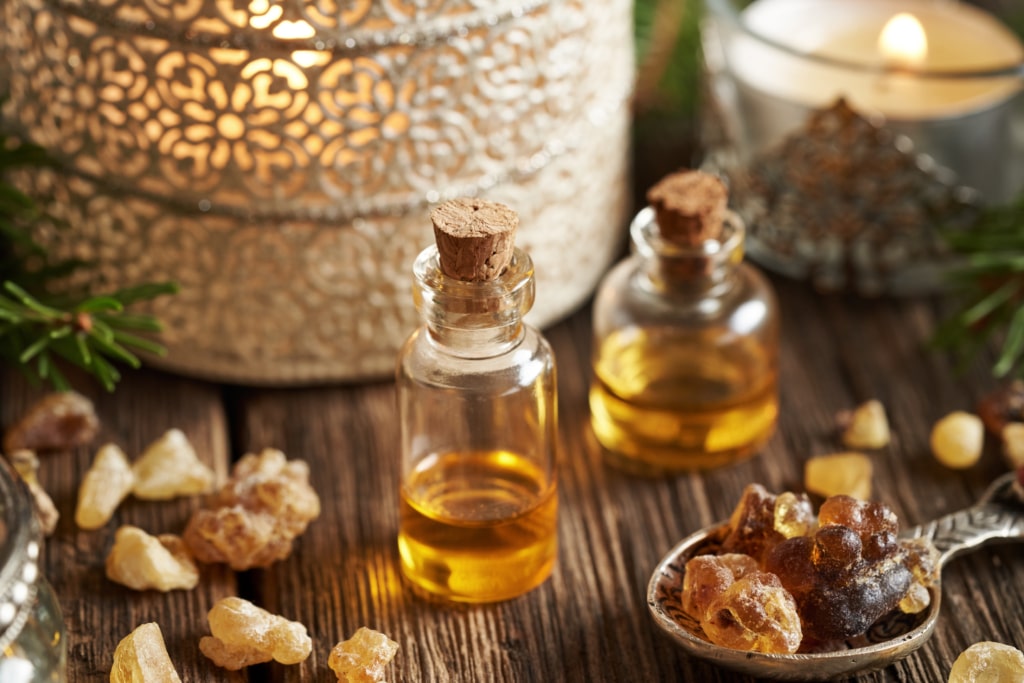
Frankincense (Boswellia spp.)
Frankincense has been revered for millennia as a bridge between the earthly and the divine. Across cultures and spiritual traditions, it has served as a sacred offering, its rising smoke symbolizing prayers carried to the heavens. This ancient resin has long held a central place in rituals meant to cleanse and purify, offering protection from negativity and anchoring the spirit in a state of reverence and inner alignment.
The aroma of Frankincense is grounding and expansive, both calming to the nervous system and clarifying to the mind. Its warm, balsamic scent creates a sacred stillness perfect for meditation, prayer, and dreams. By softening mental noise and anchoring awareness in the body, Frankincense creates space for the spirit to rise and flourish.
Frankincense is also renowned for its ability to ease anxiety, lift heavy emotions, and promote restful, restorative sleep. Its gentle, centering energy helps regulate breath and soothe the emotional body, offering a spacious calm where reflection and integration can occur. Frankincense reminds us that deep stillness is often where the clearest truths emerge.
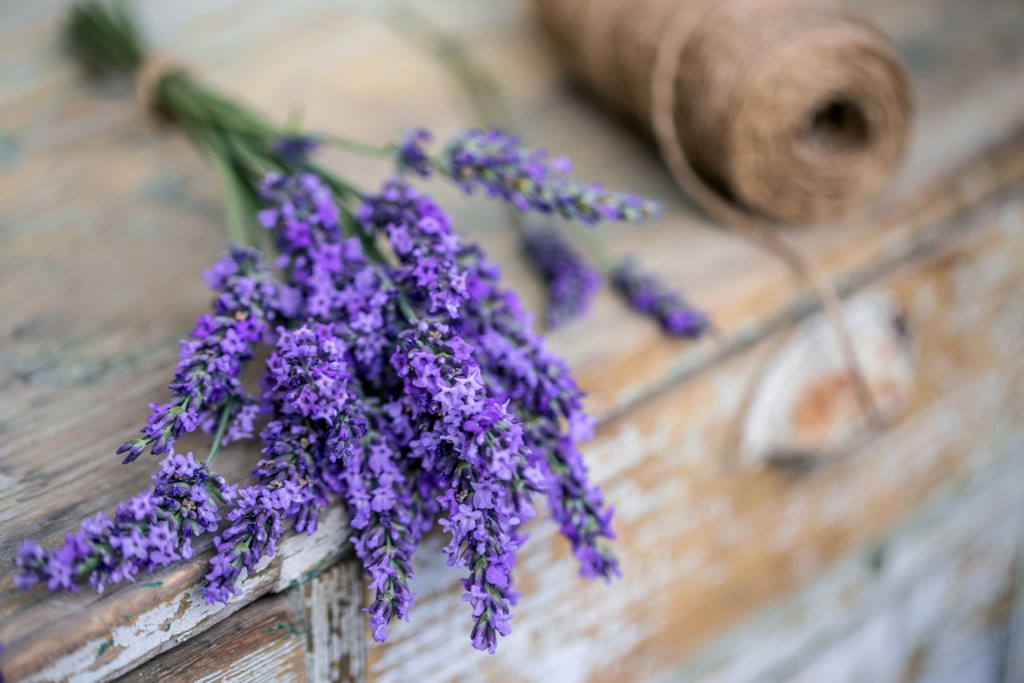
Lavender (Lavandula spp.)
Lavender is one of the most cherished aromatic plants for calming the mind and soothing the heart. A gentle yet powerful nervine and sedative, it works on the nervous system to ease stress, tension, and anxiety, helping the body unwind and the mind find stillness. Its calming presence supports deep, restorative sleep, which is essential for dreaming to unfold in its full, vivid richness.
Though often known for its relaxing qualities, Lavender also has a subtle cephalic effect – it clears and uplifts the mind, offering clarity when thoughts are muddled by stress, anxiety, or emotional overwhelm. In this way, it brings balance to the mental and emotional landscape, creating space for insight, reflection, and inner harmony.
Lavender is especially helpful for those experiencing stress-related insomnia or restlessness, gently guiding the body toward sleep. Its aroma invites both relaxation and receptivity, encouraging dream recall and emotional integration through the dream state. Lavender offers a sanctuary for the senses, a fragrant balm that restores equilibrium and invites the soul to safely journey inward.

Unlock Your Free Sneak Peek Access To...
🌿 The Aromatic Medicine Garden Membership 🌿
Are you ready for a deeper holistic dive into the world of aromatic plants? See what our membership is all about with your free sneak peek into videos about Lavender & other herbs, plus foundational herbal & aromatic medicine lessons full of valuable insights.
Valerian Root (Valeriana officinalis)
If restful sleep feels elusive, Valerian may be the plant ally you’ve been searching for. Long used in herbal traditions to support deep, restorative sleep, Valerian has a unique dual nature – it can be both calming and mildly stimulating, depending on the individual. This paradox is part of what makes it so powerful for dreamwork: by quieting the nervous system while keeping the mind subtly active, Valerian can enhance the occurrence and vividness of dreams.
Its earthy, musky aroma has a deeply grounding quality, inviting the body into a state of release and stillness. At the same time, it offers a gentle nudge to the subconscious, making it particularly well-suited for meditation, bedtime rituals, and inner reflection. Herbalist Brigette Mars writes, “Valerian is sometimes referred to as a 'daytime sedative' because it can improve performance, concentration, and memory during the day, as well as help one to sleep better during the night.” [2]
That said, Valerian’s effects can vary greatly from person to person. While many find it deeply relaxing, others experience it as stimulating, especially if the dose is too high or if the plant's energetics don’t match the individual's constitution. As with all herbs, it’s important to listen closely to your body and begin with small amounts to observe how it responds. When it resonates, Valerian can be a profound support for deep sleep, dream recall, and emotional restoration.
To learn more about other aromatic plants for sleep, click here to read our blog article, “Sleep Better Naturally: Aromatic Plants for Restful Sleep.”

How to Use Aromatic Plants for Dreams
Aromatic plants can be powerful allies for preparing the body, mind, and spirit for deep sleep and meaningful dreams. Here are simple ways to incorporate them into your bedtime rituals:
Natural Incense: Burning pure plant-based incense before bed helps release calming aromatics into the air, creating a peaceful, dream-friendly atmosphere.
Aromatic Baths & Foot Soaks: Create an herbal bath by adding fresh or dried herbs to a warm bath or foot soak. Hot water releases the volatile oils of aromatic herbs into the steam, surrounding your senses while relaxing the mind and body.
Essential Oils: Diffuse into your space or apply diluted essential oil in a carrier oil to pulse points as part of a bedtime ritual.
Dream Pillows & Sachets: A time-honored tradition, dream pillows filled with dried or fresh aromatic herbs can be placed under or near your pillow to influence dreams and promote restful sleep.
Herbal Dream Balms: Massage an herbal balm into your chest or wrists before bed to inhale the plant’s aromatics throughout the night. You can make your own balm with plants featured in this post or incorporate other herbs that resonate with you.
Dreamy Herbal Teas: Sip a comforting aromatic herbal tea 30-60 minutes before sleep. Always be sure to research your chosen herbs are safe for internal use and check for any contraindications.
Honoring Dreamwork and Integrating Dream Experiences
Working with aromatic plants for dreams is a beautiful way to deepen your relationship with both the natural world and your inner self. These botanical allies can gently open the doors to deeper sleep, vivid dreams, and intuitive insight. One of the simplest and most powerful ways to support this practice is by keeping a dream journal. Writing down your dreams as soon as you wake helps strengthen your ability to recall them, reveals recurring symbols or themes, and builds a bridge between your waking and dreaming mind. Over time, this practice, paired with the support of aromatic plants, can transform your nights into rich journeys of healing, reflection, and self-discovery.

Whether you’re burning incense to tap into your intuition, ease anxiety, support deep sleep, or simply create a calm, soothing atmosphere at home, the quality of what you’re burning and breathing matters.
That’s why we created Higher Mind Incense, a collection of 100% pure plant-based incense made without synthetic fragrances, chemicals, or additives. We never use artificial fragrance oils or ingredients treated with pesticides or chemical fertilizers – just real aromatic plants you know and love.
Article Written By Melissa Szaro

References
1. Kloos, Scott. (2017). Pacific Northwest Medicinal Plants: Identify, Harvest, and Use 120 Wild Herbs for Health and Wellness. Portland, OR: Timber Press.
2. Mars, Brigitte. (2007). The Desktop Guide to Herbal Medicine. Laguna Beach, CA: Basic Health Publications, Inc.
© 2025 The Northwest School of Aromatic Medicine. All rights reserved.
*The statements above have not been evaluated by the FDA, and are for educational purposes only. This article is not intended to diagnose, treat, cure, or prevent any disease. This article should not be taken as medical advice. Please consult your physician before you use this information for health purposes.
